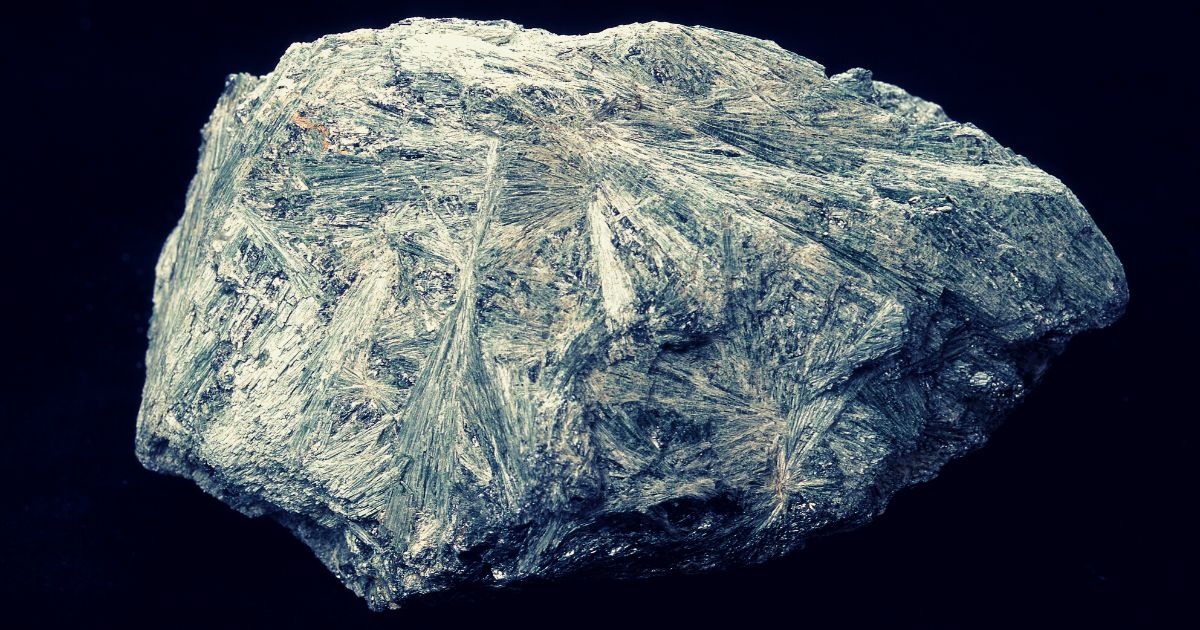
Asbestos is a naturally occurring, fibrous material, and there are two main categories of asbestos: amphibole and serpentine. Crocidolite belongs to the amphibole family; others in this family are actinolite, amosite, anthophyllite, and tremolite, and they all have sharp fibers. Chrysotile asbestos is the only category of serpentine asbestos, and it has curly fibers instead.
Crocidolite asbestos is blue to bluish-gray, with needle-like fibers. These are the strongest known asbestos fibers and are highly resistant to acids. They are very flexible, have a fine texture, and can bend more than 90 degrees before breaking. This makes them easier to inhale, and therein lies the danger. The particles can be easily lodged in the abdomen or lungs and can lead to asbestos-related diseases, such as mesothelioma.
This asbestos is often found in South Africa, Bolivia, and Western Australia. Government agencies heavily regulate the import and use of asbestos, however, it still poses risks.
Asbestos is found throughout the world in public structures and buildings, and it was widely used in certain materials and products. Asbestos was widely used in auto manufacturing and construction projects throughout the 1900s for its heat-resistant properties and durability. Crocidolite asbestos was also used to make cement, ceiling tiles, gaskets, fire door insulation, limpet spray, wire casings, and even Kent cigarettes.
An American Association for Cancer Research article reported that the original Kent Micronite cigarette filters had crocidolite asbestos in them from 1952 to 1956. Someone who smoked just one pack a day would have been inhaling more than 130 million of the fibers per year.
The health risks of asbestos were not taken seriously until the late 1980s, when it was revealed that any kind of asbestos exposure was unsafe. At that point, regulatory agencies started limiting the amounts of asbestos that could be imported and restricted how it would be handled.
Asbestos is still used today due to its unique physical properties. It is mostly used for asphaltic roofing compounds for commercial buildings, gaskets, and friction products, like clutches and brake shoes. This is highly regulated, and there are no products containing asbestos exclusively produced for use by the general public.
Every form of asbestos is carcinogenic for humans, and exposure to asbestos can lead to cancer of the lungs, ovaries, and larynx. It can also cause mesothelioma, a cancer of the peritoneal (tissue that lines the pelvic cavity and abdominal wall) and pleural (thin tissue covering the lungs and lining the interior chest wall cavity). Asbestosis presents with fibrosis of the lungs, effusion, and thickening in the pleura.
One of the main problems with mesothelioma is that it slowly develops. When asbestos gets inhaled or accidentally ingested, there are usually no initial symptoms that are indicative of a serious illness. The microscopic fibers can stay lodged inside the body for many years.
When the symptoms do appear, people often mistake them for other health conditions. Many patients who have asbestos diseases previously worked in manufacturing and construction industries and were not aware they were being exposed. Unfortunately, many asbestos-related diseases are detected late and have a poor prognosis rate.
Some common symptoms of asbestos-related diseases are listed below, and it is easy to see how some could be ignored or associated with other illnesses:
Asbestos-related diseases are expensive. In addition to the medical treatment costs, there may be lost wages, caregiver costs, grief support, therapy, travel expenses, and funeral costs.
If you or your loved one has been diagnosed with mesothelioma or another asbestos-related disease, a lawyer can provide legal help. These cases are complex, especially when a lot of time has passed and the liable party has gone out of business.
Look for a lawyer who is experienced in asbestos-related litigation. There are asbestos trust funds in place that provide damages for settlements and claims for plaintiffs. An experienced asbestos lawyer will be well familiar with this type of compensation.
You will also want your lawyer to have the following qualities:
Crocidolite may be the most dangerous type of asbestos, but any asbestos exposure can be life threatening. If you have been diagnosed with mesothelioma, speak with one of our Philadelphia asbestos lawyers at Brookman, Rosenberg, Brown & Sandler. Complete our online form or call us at 215-569-4000 to schedule a free consultation. Located in Philadelphia, we serve clients throughout New Jersey and Pennsylvania, including Delaware County, Chester County, and Philadelphia County.